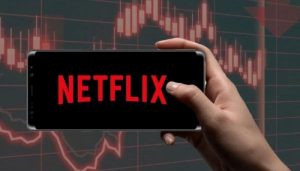Microsoft seeks dismissal of New York Times ‘doomsday’ copyright lawsuit

The technology company described the lawsuit as short-sighted and likened it to Hollywood’s failed opposition to the VCR
Microsoft has filed a response to a copyright infringement lawsuit filed by the New York Times, disputing the claim that it used content to train generative artificial intelligence. Microsoft described the lawsuit as a false narrative of “doomsday futurology” and likened it to Hollywood’s unsuccessful resistance to the VCR.
In a motion filed on Monday to dismiss part of the lawsuit, Microsoft, along with ChatGPT-maker OpenAI, criticized the Times’ assertion that its content was given special attention and that tech companies were attempting to benefit from the newspaper’s substantial investment in journalism.
The lawsuit, which carries significant implications for the future of generative artificial intelligence and news content production, sees the Times accusing Microsoft, OpenAI’s largest investor, of using its copyrighted material. The paper alleges that Microsoft utilized its “copyrighted news articles, in-depth investigations, opinion pieces, reviews, how-to guides, and more” to develop AI products, thereby jeopardizing the Times’ ability to deliver its services.
Microsoft likened the lawsuit to Hollywood’s initial resistance to the VCR, which consumers used to record TV shows, a technology that the entertainment industry in the late 1970s feared would disrupt its economic model. Microsoft’s response quoted Jack Valenti, then head of the Motion Picture Association of America, who likened the VCR to the Boston Strangler for the film industry, implying a threat to their survival.
In this instance, Microsoft contended that The New York Times was leveraging its influence and platform to oppose the latest significant technological advancement: the Large Language Model (LLM). Microsoft’s legal team argued that the content used to train LLMs did not replace the market for the original works but instead taught the models language.
OpenAI has requested a judge to dismiss sections of the lawsuit, claiming that the publisher allegedly paid someone to manipulate OpenAI’s products to fabricate instances of copyright infringement using ChatGPT.
OpenAI’s attorneys stated, “ChatGPT is not intended as a replacement for a subscription to The New York Times.” They argued that in reality, people do not use ChatGPT or any other OpenAI product in this manner, nor is it feasible. They emphasized that ChatGPT cannot be used to access Times articles at will.
Following Microsoft’s legal response, The New York Times retaliated, particularly objecting to the comparison with 1980s home-taping technology.
Ian Crosby, lead counsel for The New York Times, stated in an email response, “Microsoft doesn’t dispute that it worked with OpenAI to copy millions of The Times’s works without its permission to build its tools,” adding that Microsoft’s comparison of LLMs to the VCR is flawed, as VCR makers never argued that massive copyright infringement was necessary to develop their products.
The statement further noted, “Despite Microsoft’s attempts to frame its relationship with OpenAI as a mere ‘collaboration,’ in reality, as The Times’s complaint states, the two companies are intertwined when it comes to building their generative AI tools.”
The conflict arises amidst a string of lawsuits from authors and artists regarding different facets of copyright, such as the rights to creative work produced using the technology. There are also concerns about AI generating highly misleading information, often referred to as “hallucinations” in the industry.
Recently, Google faced backlash and issued an apology after its Gemini chatbot was used to generate images depicting Black soldiers in World War II-era German military attire and Vikings wearing traditional Native American clothing. Google temporarily disabled the technology’s capability to create images of people and pledged to address what it referred to as “inaccuracies in some historical” representations.
The dual concerns regarding AI technology involve its potential to infringe upon copyrighted material and produce information or images that are highly improbable. This issue has come to the forefront as OpenAI recently admitted that training AI models without copyrighted works is “impossible” due to the broad coverage of copyright over various forms of human expression. OpenAI has declined to reveal the contents of its training databases, including those for its latest tool, a video generator named Sora.
In a letter to the UK’s House of Lords, OpenAI stated that restricting the training data to public domain content would not suffice to develop AI systems that meet current societal needs.
OpenAI’s CEO, Sam Altman, expressed surprise at The Times’s lawsuit, stating that the system did not require The Times’s data for training. He emphasized that any single training source had minimal impact, noting that The Times’s articles constituted a small portion of the text corpus used to create ChatGPT.


